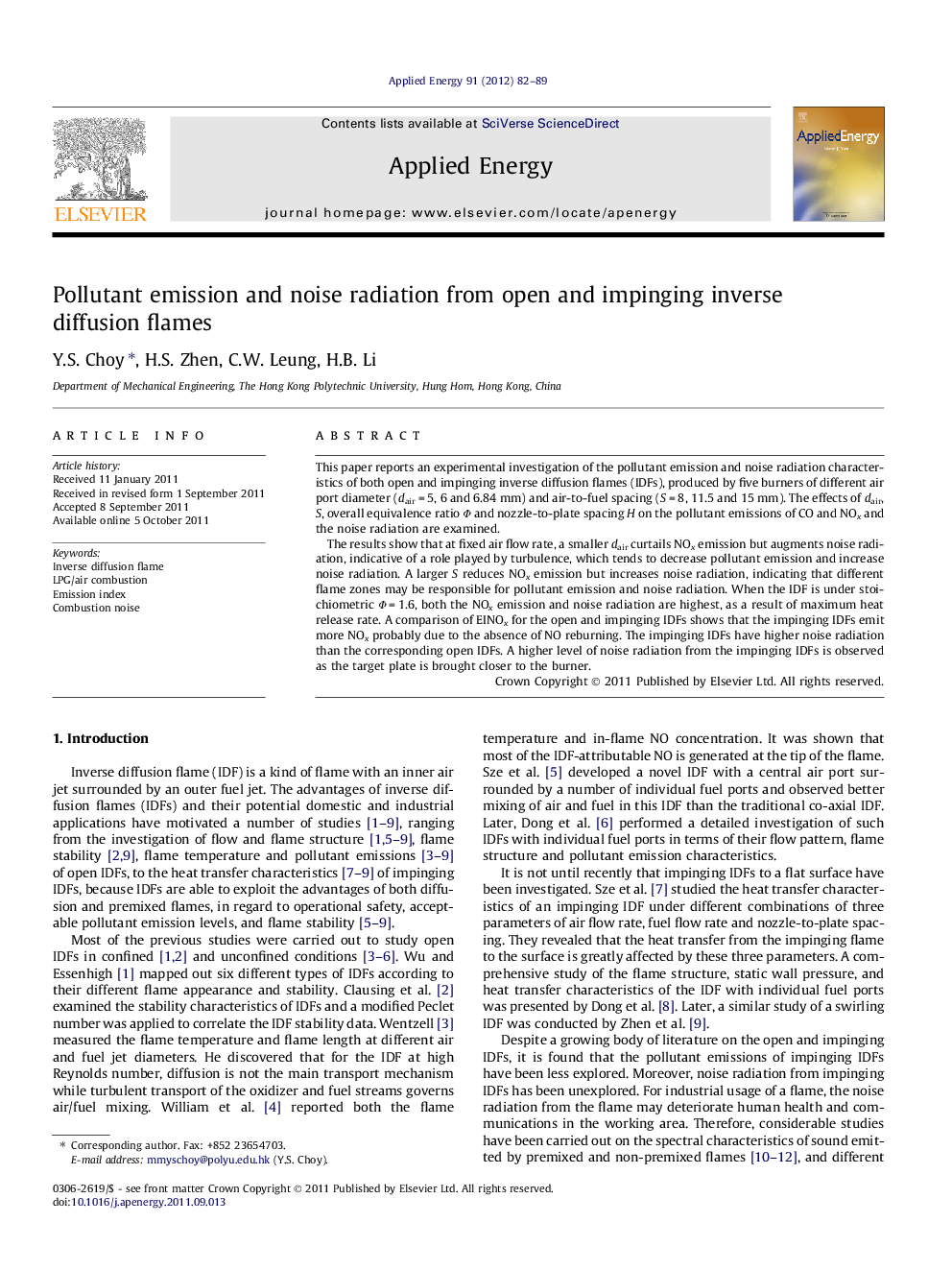| Article ID | Journal | Published Year | Pages | File Type |
|---|---|---|---|---|
| 243714 | Applied Energy | 2012 | 8 Pages |
This paper reports an experimental investigation of the pollutant emission and noise radiation characteristics of both open and impinging inverse diffusion flames (IDFs), produced by five burners of different air port diameter (dair = 5, 6 and 6.84 mm) and air-to-fuel spacing (S = 8, 11.5 and 15 mm). The effects of dair, S, overall equivalence ratio Ф and nozzle-to-plate spacing H on the pollutant emissions of CO and NOx and the noise radiation are examined.The results show that at fixed air flow rate, a smaller dair curtails NOx emission but augments noise radiation, indicative of a role played by turbulence, which tends to decrease pollutant emission and increase noise radiation. A larger S reduces NOx emission but increases noise radiation, indicating that different flame zones may be responsible for pollutant emission and noise radiation. When the IDF is under stoichiometric Ф = 1.6, both the NOx emission and noise radiation are highest, as a result of maximum heat release rate. A comparison of EINOx for the open and impinging IDFs shows that the impinging IDFs emit more NOx probably due to the absence of NO reburning. The impinging IDFs have higher noise radiation than the corresponding open IDFs. A higher level of noise radiation from the impinging IDFs is observed as the target plate is brought closer to the burner.
► The effect of burner geometry (dair and S) on inverse diffusion flames is studied. ► With fixed air/fuel supplies, a smaller dair curtails NOx emission but augments noise radiation. ► With fixed air/fuel supplies, a larger S reduces NOx emission but increases noise radiation. ► Both NOx emission and noise radiation are maximum under stoichiometric combustion. ► Impinging flames are nosier than corresponding open flames due to the mirror effect of the plate.
